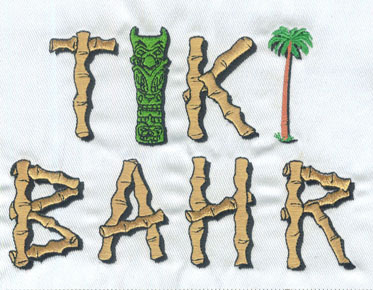Digitizing Portraits for Embroidery: Tips for Realism
Embroidery is a timeless art form that has the power to turn ordinary fabric into exquisite works of art. When it comes to creating realistic and detailed embroidered portraits, the process involves much more than meets the eye. In this blog post, we'll delve into the fascinating world of digitizing portraits for embroidery and explore the tips and techniques that bring realism to life through thread and fabric.
The Art of Digitizing Portraits
Digitizing portraits for embroidery is a complex and meticulous process. It involves translating a photograph or artwork into a format that an embroidery machine can understand and execute with precision. Here's a step-by-step breakdown of the journey from a portrait to an embroidered masterpiece:
- Selecting the Right Image:
The process begins with choosing the right photograph or artwork.
High-resolution images with clear details are crucial for capturing the
essence of a person's face.
- Digitization Software:
Skilled digitizers use specialized software to convert the image into a
digital format. This software allows them to define the stitches, colors,
and thread densities that will recreate the portrait.
- Stitch Types: Different
stitch types are used to create depth and texture in the portrait. The
most common types include satin stitches for smooth areas, fill stitches
for shading, and contour stitches for defining features.
- Thread Selection: The
choice of thread colors is vital in achieving a realistic effect. A wide
range of thread colors is available, and the digitizer selects the shades
that match the image's colors as closely as possible.
- Stitch Density: Stitch
density is carefully adjusted to ensure that the thread covers the fabric
effectively. It's crucial for maintaining the balance between detail and
the durability of the embroidered portrait.
- Fine Tuning: The digitizer
fine-tunes the design, ensuring that the placement and sizing of features
are accurate. This step demands meticulous attention to detail.
- Quality Control: A thorough quality check is conducted to verify that the design will stitch out correctly. Adjustments are made as needed to ensure the final portrait is true to the source image.
Tips for Realistic Portrait Embroidery
Creating a realistic embroidered portrait is an art that requires practice and skill. Here are some valuable tips to help you achieve the best results:
- Choose the Right Photo:
Begin with a high-quality, well-lit photograph that captures the subject's
personality and features. Sharp details are essential for realism.
- Simplify Complexity: While
it's tempting to include every detail, simplifying the image can often
yield better results. Focus on the most defining features to maintain
clarity.
- Layering Stitches: To
create depth and texture, use layering. Overlay stitches with different
thread colors to achieve realistic shading and contours.
- Focus on Eyes: The eyes are
the windows to the soul and the most critical part of a portrait. Pay
meticulous attention to detail in the eyes, as they are the focal point.
- Consider Thread Types:
Experiment with thread types like metallic or variegated threads to add
dimension and sparkle to the portrait.
- Use a Test Sample: Before
stitching the final design, create a test sample on a similar fabric to
evaluate how the colors and stitches will appear.
- Practice and Patience: Like any art form, achieving realism in embroidered portraits takes practice. Don't be discouraged by initial attempts; improvement comes with time and patience.
Applications of Portrait Embroidery
Portrait embroidery has a wide range of applications, from preserving cherished memories to honoring loved ones. Here are some common uses of embroidered portraits:
- Family Heirlooms:
Embroidered portraits of family members become cherished heirlooms passed
down through generations.
- Wedding Keepsakes: Couples
often choose to have their wedding portraits embroidered as a unique and
personalized memento of their special day.
- Pet Portraits: Beloved pets
are often celebrated with embroidered portraits that capture their
personality and charm.
- Gifts and Commemorations: Embroidered
portraits make heartfelt gifts for birthdays, anniversaries, and other
special occasions.
- Artistic Expression: Some artists use portrait embroidery as a form of creative expression and exhibition.
Conclusion: From Pixels to
Stitches
Embroidering a realistic portrait is a labor of love, requiring a unique blend of artistry, technical skill, and attention to detail. The process of digitizing portraits for embroidery is a bridge between the visual world of pixels and the tactile world of thread and fabric. When done with precision and care, it can result in breathtaking works of art that capture the essence of the subject.
Whether it's a treasured family portrait or a
creative expression of art, embroidered portraits are a testament to the
enduring beauty and versatility of embroidery as an art form. As you embark on
your journey to master the art of portrait embroidery, remember that each stitch
brings you closer to turning pixels into stitches and creating a timeless piece
of art.

